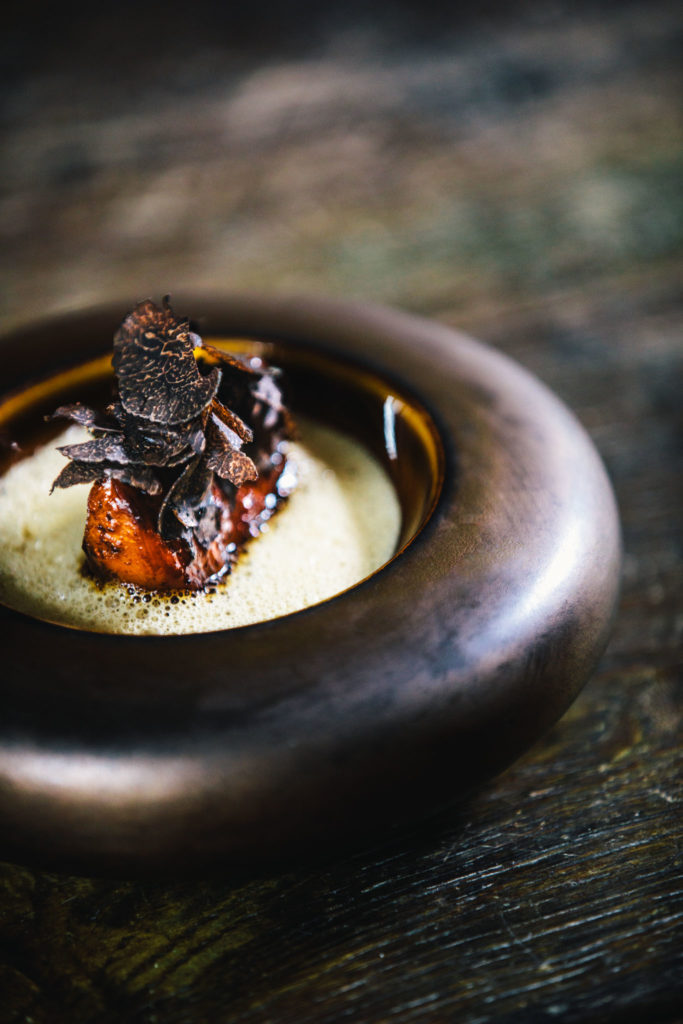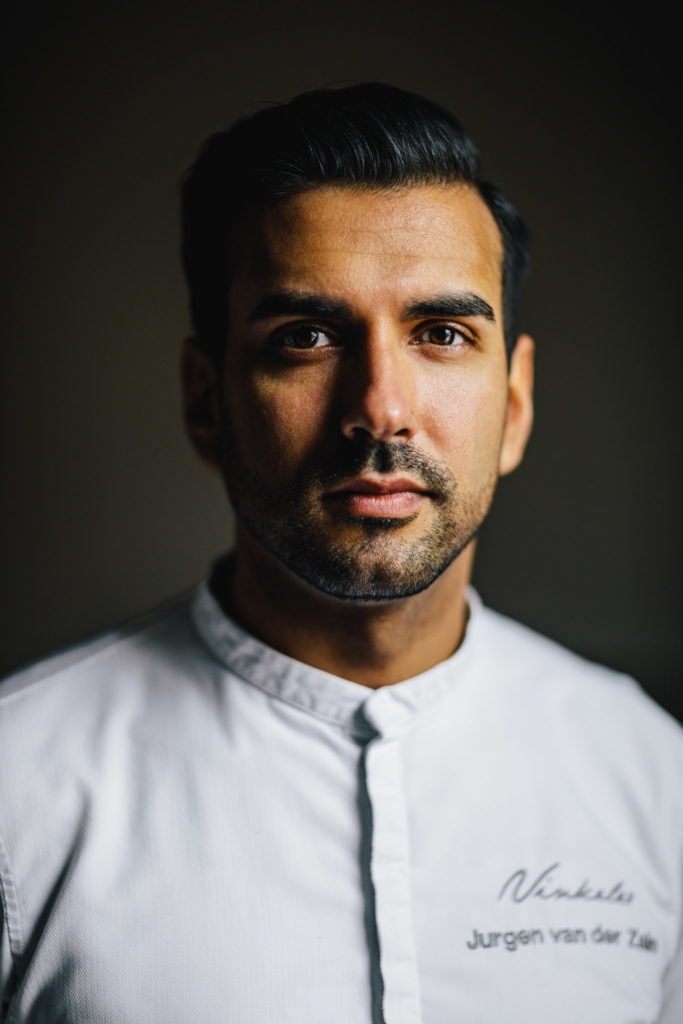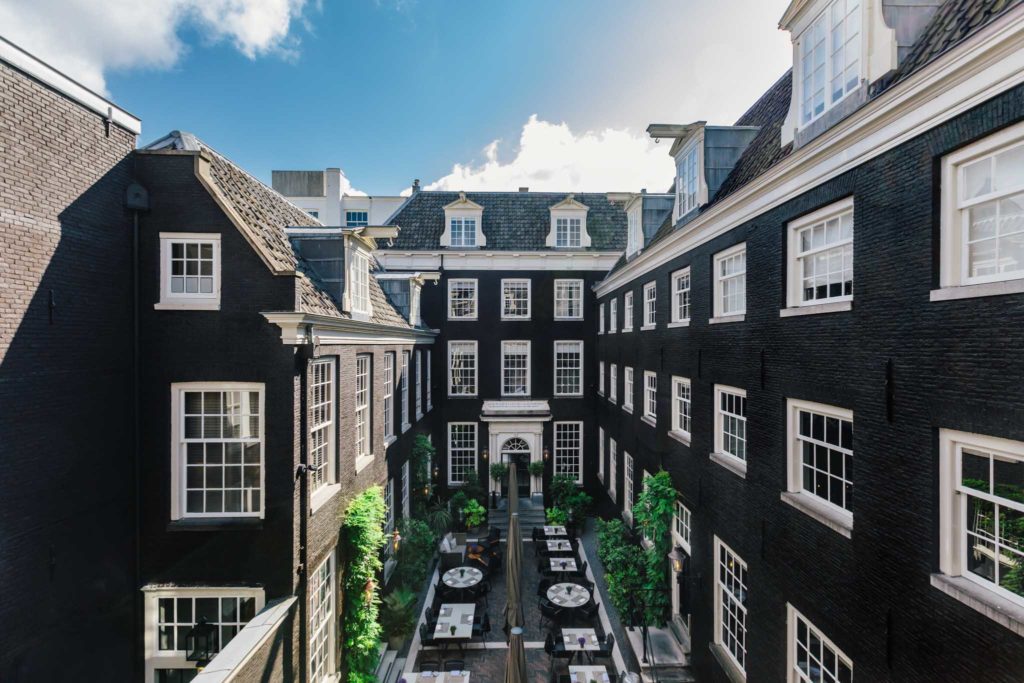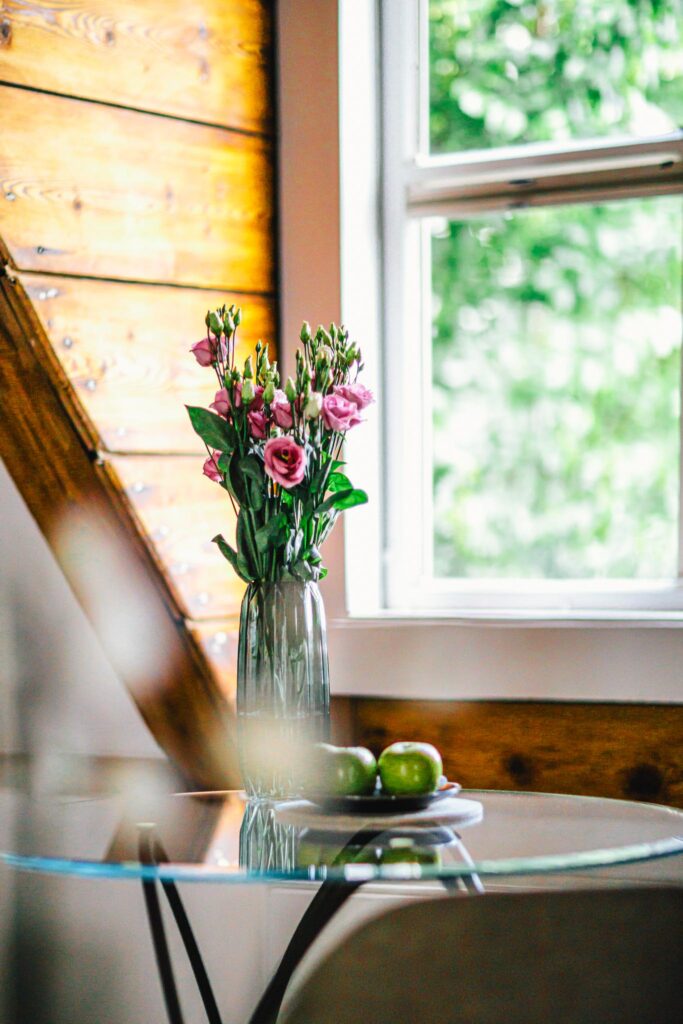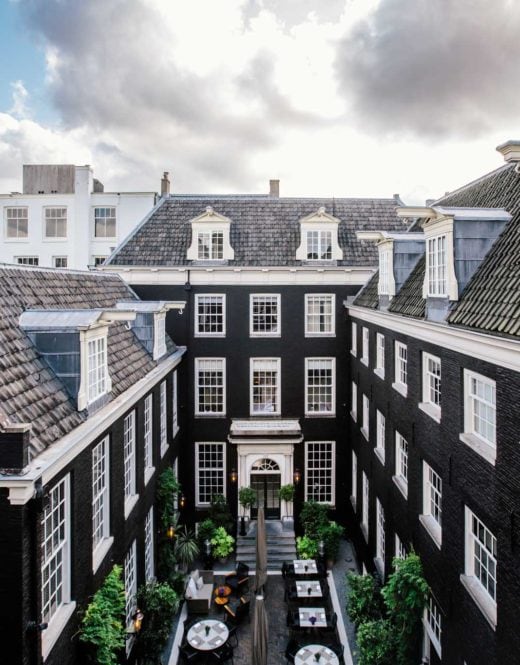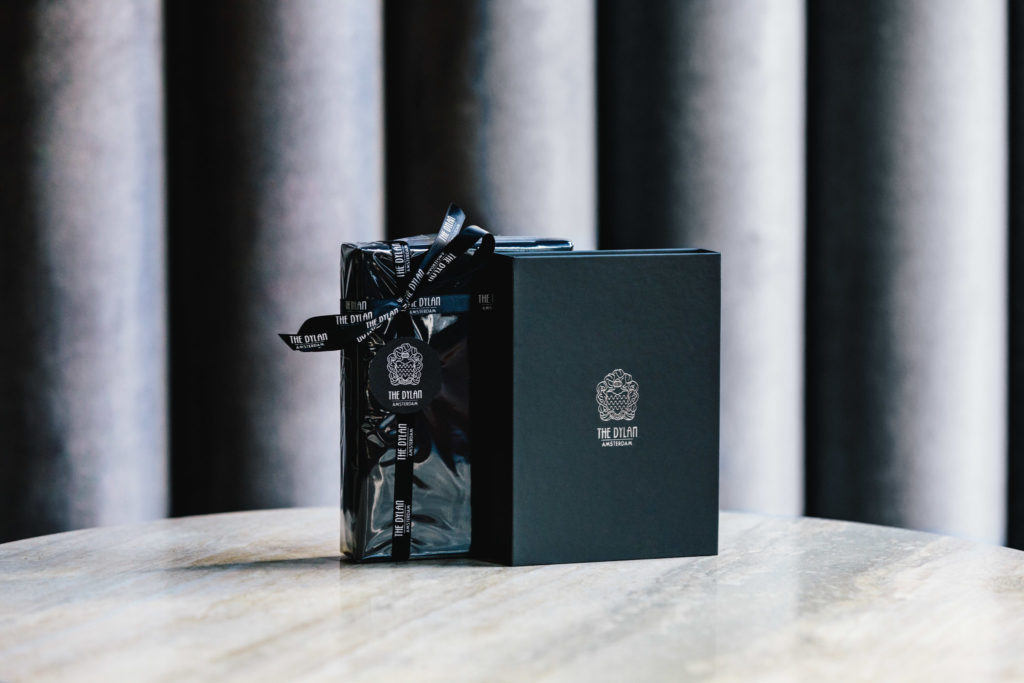Reflecting on the truffle season with Chef de Cuisine Jurgen van der Zalm of Restaurant Vinkeles.
Truffles, some of the most sought after ingredients and are praised by many chefs… Unlike the white truffles, which are richly perfumed but have little taste, the black truffles are very intense in both smell and taste. Also know as ‘black gold’, they are dark brown to black. The riper the darker. The veins are very thin and white. At Restaurant Vinkeles, we always wait until the truffles have fully ripened, which mostly is in January and February, then they are at their best!
What makes truffles so precious?
So, the truffle season runs from December to March. In the last years, I have noticed that the demand for the European winter truffle has exploded, and only a meagre supply is available from France and Italy. This is also the reason why prices have risen so dramatically. €1900/kg is ‘normal’ nowadays..
Truffles only grow well in climates with short, soft winters and long, sunny summers, with a good heavy rain shower every now and then. Due to climate changes, this has also widely varied over the last season, which directly impacts quality. The ‘black gold’ only thrives well in highly specific areas: the soil must be calcareous, rich in organic nutrients and a perfect balance between carbon and oxygen. Truffle mostly grows at (green or white) oak trees, but in some regions you’ll find them at chestnut-, hazel- and linden trees as well. Moreover, the tree must be well developed for a truffle to nestle. Trees younger than 15 years do not stand a chance, generally truffles choose trees that are 30 years or older to grow. And then, if the natural enemies of the truffle keep quiet, such as insects, squirrels and wild boars, truffles have a chance of getting through their growth phase and being successfully harvested, which also is a quest on its own. It’s therefore no miracle that the truffle is so scarce and precious. At Restaurant Vinkeles, we are working with Italian winter truffles from the Alba region.
Truffles #insideTheDylan
The inspiration for the dish we’ve had on our menu comes from the dish which made me ‘Talented Chef of the Year’ in 2019, a dish with scallop and celeriac, hazelnut and winter truffle. The flavours complement each other instead of one flavour passing onto the other.
I started by brining the French celeriac, which is small and delicate in taste. They only had the flavour I liked after 4 days. The mildly spicy sensation had broadened due to some freshness caused by natural fermentation. To add a bit of nuttiness, I then roasted the cabbage in burned butter (when gently heating up butter, it curdles, causing the lactic acids to sink and caramelise, resulting in a beautiful dark golden color and a hazelnut-like taste) for 90 minutes, which also caused the structure to change to almost meat-like.
Often, the flavour profile of black truffles reminds one of cacao and chocolate, which inspired me to complement its delicate flavour with coffee. I made a lacquer of coffee, molasses, shiitake mushrooms and yuzu-miso, which added some bitter tones to the sweet/spicy/earthy celeriac, but also some umami and fraîcheur. I lacquered the celeriac and topped off the dish with thin slices of winter truffle: the thinner the slices, the larger the surface, resulting in a richer smell and flavour.
To finish the dish, I roasted all trimmings of the celeriac in the oven until almost burned, and infused a ‘tea’ for 24 hours. This tea I then binded with butter and spooned over the celeriac, with some drops of hazelnut oil. Also, by using all of the trimmings, there is no ‘waste’ in this dish.
All in all, this dish was one of the most exciting and complex dishes of the last truffle season. The dish was served after the ‘piece’ (main course). De intense sweet and earthy flavour, together with a little bitterness of the truffle and coffee in the dish, was a beautiful passage to the chocolate dessert we served as dessert in our ‘Chef’s Signature Menu‘ at the time.
